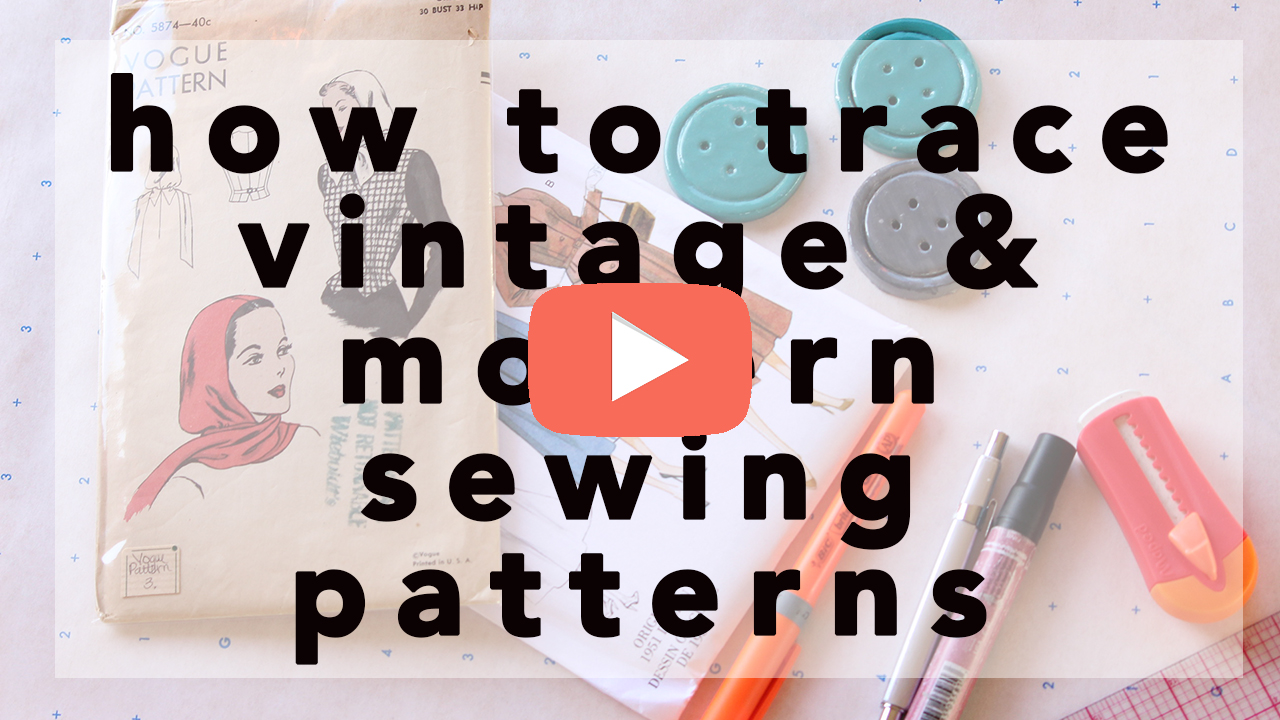If you’re looking for how to trace vintage sewing patterns, my video has you covered!
Yes yes, the video is a little bit on the longer side, but I go into it. The pros and cons, what tools I use, and why I even bother to trace all my modern ones, too. Its definitely a labor of love, but as I say in the video, keeping the original intact is a Big Deal for me, especially when patterns can easily go out of print or I just don’t want to spend time re-taping a PDF.
Vintage patterns, on the other hand, should always be traced to keep the original in as pristine condition as possible. Browsing the sewing community, I know there are some outliers who go balls-to-the-wall and just use their originals and to them I say… you’re breaking my heart!
Time Stamps for a specific pattern-type:
- 6:38 for PDF patterns
- 9:37 for commercial patterns
- 14:24 for vintage patterns
Patterns used in this tutorial were:
- Vintage Vogue 5874 [out of print]
- The Rigel Bomber Jacket
- Butterick B5824
Tools I used in this tutorial:
- Clear, grid ruler (you can use a regular ruler, but I find the clear, flexible ones the most versatile)
- French curve
- Mechanical pencil (my personal preference is a .5 because I like a fine line)
- Eraser
- Pattern weights (the ones I use are from Rachel from Rach Against the Sewing Machine)
- Dot paper
Definitely let me know if this video was helpful for you! I’m considering doing more tutorials in 2017 and making them a regular segment of my YouTube channel. Last year, I received so many questions on how to trace vintage sewing patterns that I couldn’t resist making it my “first” sewing related video of the year (not counting my resolutions post!)
Do you trace your sewing patterns? Why or why not?
Disclaimer: This post contains affiliate links :)


Comments
6 responses to “How to Trace Vintage Sewing Patterns”
I, too, enjoyed this video. The details you covered for each type of pattern was very helpful. It never hurts to give a bit more information than not enough. Thank you.
No problem :) Thanks so much for commenting!
Is there a reason you prefer not to use transfer paper and a tracing wheel?
During college, we were taught using professional tools and techniques, so they just stuck with me haha. I do occasionally use transfer paper and a tracing wheel, but only if I don’t have the dot paper available and no transparent-ish paper to use. It’s more of a backup technique and last resort in my workflow :)
Fab tutorial! I love that you have covered the different types of patterns and the best way to tackle the tracing for each of them. Lots of great tips! Also really clear and easy to follow along with! You go girl!!!
Thanks! It was definitely interesting to shoot and I felt like I rambled a bit, but better video next time haha!